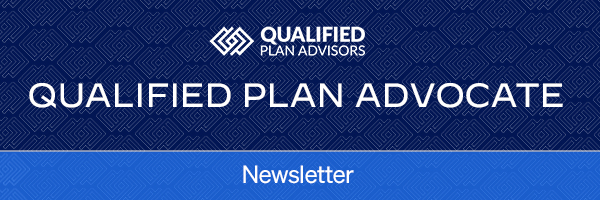Fiduciary Responsibilities in Challenging Markets
It may be an understatement to describe the markets as challenging in 2022. When the pandemic struck in 2020, the market-related pains were short-lived, as Congress and the Federal Reserve stepped in with stimulus assistance to save the day. That assistance not only stopped the pain, but also propelled the markets to artificially strong performance through the rest of 2020 and most of 2021. This helped retirement plan participants to retain conviction in their saving and investment strategies, which led their account values to grow and provide some solace during a strange time.
We’ve not been so lucky in 2022, as inflation has run rampant, equity markets have struggled mightily, and bond markets have offered no place to hide. Although fiduciary responsibilities don’t necessarily change when markets underperform, they probably become more important. This brings about a good opportunity to explore the ways fiduciaries can explore whether their plans are built to help participants through difficult times. The following discussion sets the stage for an investor-centric webinar on October 11 and a 15-minute Fiduciary deeper dive webinar on October 18.
The Element of Choice: Striking the Right Balance. What’s the right number of investment options for participants? That’s a challenging question to answer because, frankly, there’s not a clear, universally applicable answer. Two or three probably is not enough. More than 50 – and certainly 100, 200, or 400 – is too many.
The appropriate guiding questions may be: (a) does the plan provide participants reasonable opportunities for diversification; and (b) can the participants understand those opportunities? One best practice for answering those questions in the affirmative is to ensure the plan offers participants three ways to invest: (1) a diverse core funds list; (2) an age-based solution; and (3) a more personalized risk- or goals-based solution.
Core Funds. The end of 2022 and early 2023 will present fiduciaries an optimal time to closely review core fund performance in the recent inflationary environment and to assess go-forward expectations. In doing so, fiduciaries may consider whether the core funds list has grown larger than necessary. In this month’s Fiduciary 15 webinar, we’ll explore opportunities to clean up and right-size the core fund lineup. We’ll also discuss the paralyzing effect of offering a larger-than-necessary lineup.
Target Date Funds. As the percentage of plan assets invested in target date funds continues to grow, it becomes increasingly important for fiduciaries to increase the amount of time and energy dedicated to target date fund review. Because all target date funds are not intended to be created equally, the review should include more than a simple performance review. What is your organization’s primary goal with target date funds? Are you trying to protect late-career employees from having their retirement dreams altered? Are you hoping for a default solution that will encourage accumulation for younger participants? Is low cost a priority?
The markets have displayed a diverse set of conditions over the last three years – the pre-COVID peak, the sharp drop, the quick rebound, the stimulus-fueled strength, and an inflation-driven pullback. This is the right time for an analysis of how the dust may settle and whether the current target date fund suite is the “right” choice moving forward.
Risk- & Goals-Based Solutions. On average, target date funds have served American workers better than a core funds list-dependent strategy. They’ve been defaulted into – or raised their hands and asked for help through – a solution that turns over asset management decisions to a professional money manager. Some participants may think they want to “do it myself”, but most prefer when a target date fund will “do it for me”.
However, the pandemic has highlighted that many investors desire a more customized solution that takes into account far more than one data point (age). As more plan sponsors respond to that demand by ensuring participants may select risk-based portfolios and/or goals-based managed account solutions, this is an important time to review those options and explore the additional capabilities available to participants.
Closing Thoughts. Market-related education is more important for fiduciaries and participants now than at any time in the last decade. We’re hopeful you’ll encourage your employees, fiduciaries, and HR/benefits staffs to take advantage of our additional educational opportunities offered this month.
– Matthew Eickman, J.D., AIF®

